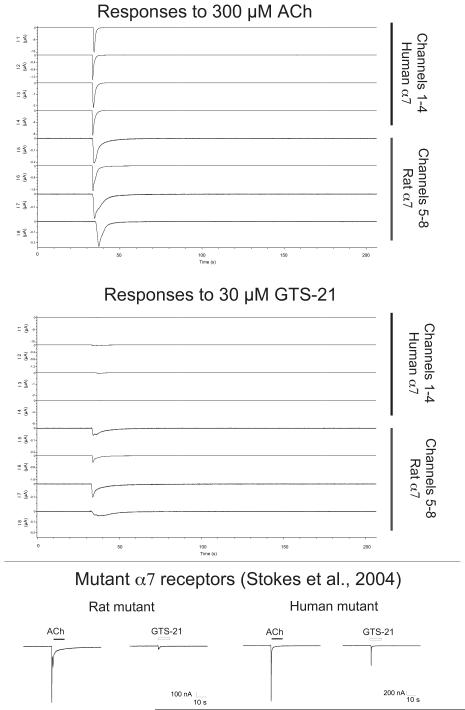Figure 1.
Relative responses of human and rat α7 receptors to ACh and GTS-21 are regulated by 3 amino acids. The upper panels compare the responses of wild-type rat and human α7 receptors, expressed in oocytes and currents recorded with OpusXpress, to control applications of 300 μM ACh and applications of 100 μM of the experimental partial agonist GTS-21. The control response amplitudes are scaled to the same size, and the experimental responses are normalized to their respective controls. Note the relatively low efficacy of GTS-21 for human wild-type receptors compared to rat. As part of an extensive study conducted with OpusXpress (see text), it was ultimately shown that this difference in GTS-21 efficacy was due to 3 specific differences in the sequence of rat and human receptors in the agonist binding site [75]. As shown in the lower panels, GTS-21 has reduced efficacy for the rat α7 mutant N184S, K186R, S167G and increased efficacy for the reciprocal human mutant α7 S184N, R186K, G167S.

